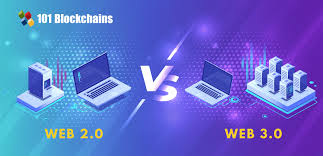What Are Web 2.0 and Web 3.0?
Web 2.0 and Web 3.0 refer to successive iterations of the web, compared with the original Web 1.0 of the 1990s and early 2000s. Web 2.0 is the current version of the internet (a term often used interchangeably with the web) with which we are all familiar, while Web 3.0 represents its next phase.
Web refers to the World Wide Web (WWW), the internet’s core information retrieval system. The WWW initialism used to (and often still does) preface a web address and was one of the first characters typed into a web browser when searching for a specific resource online. Internet pioneer Tim Berners-Lee is credited with coining the term World Wide Web to refer to the global web of information and resources interconnected through hypertext links.1
KEY TAKEAWAYS
- Web 2.0 and Web 3.0 represent successive, advanced iterations of the original Web 1.0 of the 1990s and early 2000s. Web 2.0 is the current version of the web with which we are all familiar, while Web 3.0 represents its next phase, which will be decentralized, open, and of greater utility.
- Innovations such as smartphones, mobile internet access, and social networks have driven the exponential growth of Web 2.0.
- Web 2.0 has disrupted sectors that fail to integrate the new web-based business model.
- Defining features of Web 3.0 include decentralization; trustlessness and permissionlessness; artificial intelligence (AI) and machine learning; and connectivity and ubiquity.
Mobile commerce is the use of wireless handheld devices, such as cellphones and laptops, to conduct commercial transactions online.

